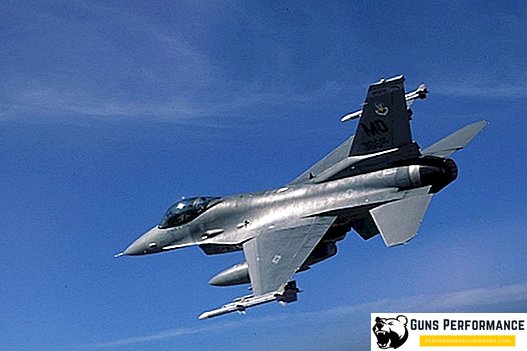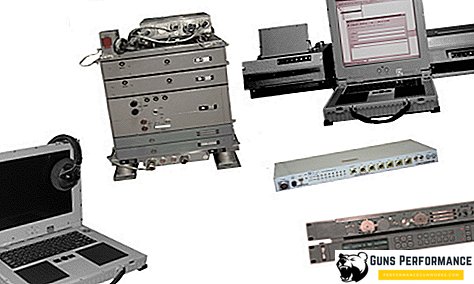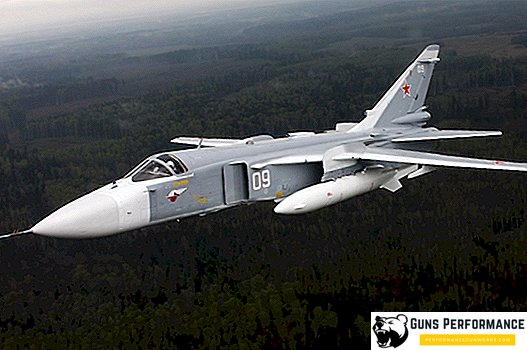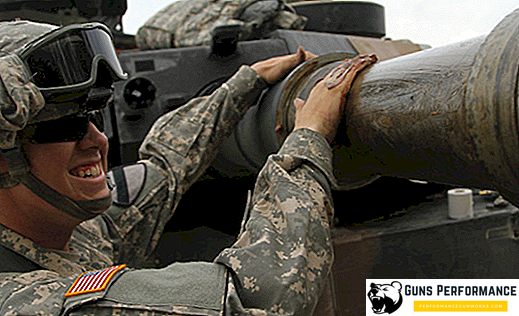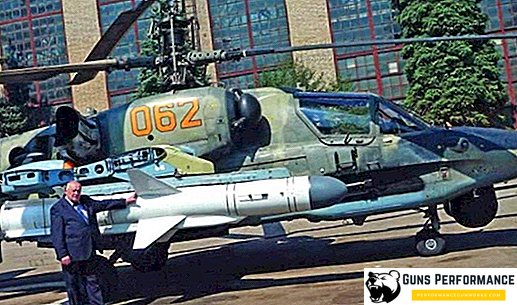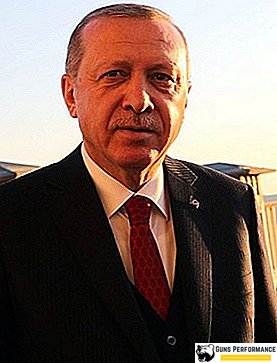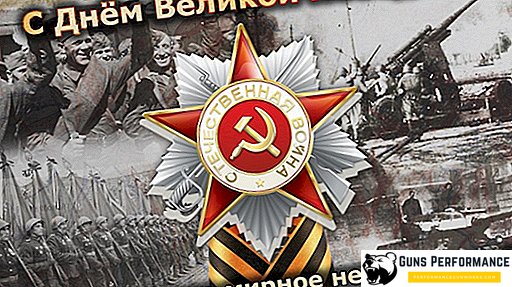
Victory Day in World War II is one of the most important and solemn holidays in the vast territory of our country. Victory Day in Russia is traditionally celebrated on May 9 and gathers hundreds of thousands of people proud for the exploits of their grandfathers and great-grandfathers, who at the cost of their lives could make our Motherland free from the German fascist government.
The history of the Victory Day
Starting June 22, 1941, the Great Patriotic War lasted 4 years. Despite the huge losses and devastation, the Soviet people still managed to win this long and bloody war. The Victory Day of the Russian army is a reminder of the labor this victory cost and pays tribute to the dead and living heroes of this terrible war. The last effort that led to the final victory was made when Berlin was captured.
History says that the decisive offensive of the Soviet troops began in January 1945, it was then that the army began to move through the territory of Poland and Prussia. Although the fascist leader Hitler committed suicide as early as April 20, 1945, this did not stop the war, but led to fierce resistance from the remnant troops. Succumbing to the propaganda that the Russians came to avenge, the German soldiers defended themselves to the last drop of blood.
The most stubborn resistance of the Soviet and Allied forces met when taking Berlin. This battle was one of the bloodiest in all the years of the war. The German capital capitulated only after losses on both sides amounted to several hundred thousand. Victory Day of Russian soldiers is a tribute and memory of soldiers who fell in that final battle. On the afternoon of May 7, 1945, fascist Germany signed a capitulation.
The price paid by the Soviet people for Victory Day

History says that in the battle for Berlin alone, the Soviet army lost more than 325 thousand soldiers and officers. According to rough estimates, for each of the days that brought our people closer to Victory Day, you had to pay a high price (about 15,000 soldiers killed per day). In total, 2.5 million soldiers took part in the operation to capture Berlin.
Many beautiful words have been said about Victory Day, but not everyone knows that for every Berlin street the Nazi troops fought to the last. Narrow passages between the houses did not allow us to use all the advantages of aviation and tank technology, therefore the combat losses were enormous.
In a few weeks of the assault on Berlin, Soviet troops lost almost 2,000 tanks, about 2,000 guns and about 900 aircraft. Many participants of these events still recall those bloody days with trepidation. Although the losses of the Soviet troops were huge, the Nazis lost much more. Only prisoners captured about 500 thousand, and the enemy divisions were divided in a total of 92.
Human losses during the Second World War among the Soviet population
During the war years, the USSR lost about 26.6 million inhabitants. This number included not only the soldiers, but all the inhabitants, who somehow died as a result of the long years of war. Most of all during the Second World War, men died - about 20 million. People who exported or left the Soviet Union during the war and did not return there after its end are also included in the total number of victims.
Why Victory Day is held on May 9

Despite the fact that the capitulation of Germany was signed on May 7, the story tells that Stalin did not recognize it, since General Susloparov, who signed this document, did not have the authority of the Kremlin. At the request of Stalin, Field Marshal Keitel created a new act, which was signed on May 9 at 00:43 hours. Due to the time difference with Europe, this holiday is celebrated on May 8 there.
By decree of the Supreme Council signed by Kalinin, all the activities to celebrate Victory Day were scheduled for May 9. This day was declared a public holiday and a day off. In the morning at 6 o'clock this decree was communicated to the Soviet people by radio. Immediately began preparations for the celebration of the Victory Day. Late in the evening a grandiose festive salute was held - 30 volleys from a thousand guns, which became the most ambitious in the entire history of the USSR
Although Victory Day was held on May 9, 1945, the military parade was held on June 24th. During the parade on Red Square, combat regiments of all fronts led by commanders and Heroes of the Soviet Union passed. In conclusion of the parade, 200 banners of Nazi Germany were brought to the Mausoleum and thrown.
The following year, the parade was postponed to May 9, since that day Germany signed a surrender. However, already in 1947, the USSR government decided to cancel the May 9 holiday, and the parades decided not to hold at all. This decision was dictated by the fact that the people are tired of war and want to forget the difficult war years, and the military parade only confuses old wounds.
12 years after Stalin’s death, when the USSR government decided to resume the Victory Day holiday. In 1965 (May 9), Victory Day was again recognized as a public holiday and a day off. Together with the holiday, the tradition of holding annual military parades was restored.
After the collapse of the USSR, Victory Day in Russia was not celebrated until 1995. On May 9, 95, the holiday was again restored, and this year there were as many as two military parades, one traditional foot, and the second with the participation of armored vehicles.
Victory Day and its significance for Russia

In order for us to celebrate Victory Day, our grandfathers and great-grandfathers gave their lives. In Russia, this holiday is celebrated on a large scale and is one of the most important public holidays. Despite the difficult 90s, the people always remembered this bright and joyful holiday and annually celebrated it even in a narrow family circle. Every citizen of Russia has an ancestor who, in arms, began to defend his country from the terrible threat hanging over it and was able to snatch victory from the tenacious clutches of fascism.
Those who during the war for health reasons could not participate in hostilities, selflessly worked in the defense industry, supplying the front with everything necessary. Most of the workers during the war were called to the front, so their places were taken by teenagers and women. Largely due to their heroic efforts, the great victory of the Soviet people over the German occupiers became possible. In spite of hunger and destruction, these people with all their strength approximated the hour of victory, losing health, and sometimes life.
How is now celebrating Victory Day in Russia

Traditionally, on Victory Day, celebrations are organized:
- Traditional rallies and demonstrations are organized;
- Flowers and wreaths are laid at the base of the monuments;
- Festive greetings of veterans of the Great Patriotic War;
Despite the fact that this holiday is not distinguished by a large number of noisy merriments and festivities, its significance lies in the fact that people remember and respect their fallen heroes. The younger generation, having seen the newsreel of the war years, begins to understand what a great mission their ancestors were able to perform, and sincere front-line songs make us think about the difficult years of the war.
Although more than 70 years have passed since the first holiday fireworks thundered on May 9, Victory Day is still a sacred holiday for every citizen of the CIS, because all people rose to defend the Motherland from the invader and many families lost one or several of their members.
The main attribute of Victory Day
One of the honorable traditions dedicated to Victory Day is the removal of the red banner. This tradition originated in 1965, when Victory Day was returned to the status of a public holiday. This banner was exactly the flag that was hung over the Reichstag.
The history of this banner is quite interesting. Despite the widespread belief that this flag was first issued at the military parade of 1945, it is not. In connection with the injuries of the standard-bearer and insufficient drill preparation of other applicants for the removal of the banner, Marshal Zhukov was forced to cancel the solemn removal of the banner.
For the first time the original banner was handed down at the parade of 1965, after which it was placed in a museum, and its place was taken by a full copy, which was carried out over the following years. The original banner is still kept in the museum of the armed forces.
Heroes - the winners of the Great Patriotic War

Time inexorably counts down year after year and every spring on Victory Day comes less and less veterans of World War II. Now there are no more than 2 percent of the heroes who were able to return alive from the war. Despite the front-line wounds and diseases, the surviving veterans are still going on a holiday. They gather together, quietly recalling their fallen comrades and the difficult years of war.
The heroes of the Great Patriotic War should be treated with special reverence, remembering that it is thanks to their efforts that we, their descendants, can enjoy freedom.

Veterans visit monuments dedicated to the victory in the Great Patriotic War and the memory of fallen heroes, travel to places of military glory, visit their memorable places. It must be remembered that very little time will pass and there will be no living participants of that terrible war at all.
The main monuments dedicated to war veterans

In the expanses of Russia and the CIS there is a large number of monuments and memorials that were built over seven decades. Let's try to list the most famous of them:
- Poklonnaya mountain. This park is a memorial complex, which immortalized the memory of the fallen Heroes of the Great Patriotic War. He is in Moscow. Poklonnaya grief is known from ancient times, travelers stopped at it, who wanted to see Moscow from above and worship its churches. Hence the name "Poklonnaya Gora". The victory park on this mountain was laid back in 1958, but the construction was completed and the complex was opened only in 1995;
- Mamaev kurgan. On the mound in Volgograd, which had been known since the Mongol invasion, in 1942-1943 bloody battles for Stalingrad took place. Today on the kurgan there are several mass graves and the monument “The Motherland Calls!”. This complex claims to be included in the UNESCO list;
- In Novosibirsk, there is a memorial complex called "Heroes' Square". He is distinguished by the fact that he is a park with many trees and flowers. An extensive memorial complex is located on the Heroes' Square. In 1958, an eternal flame was lit on the square, which still burns today;
- The Alley of Heroes in St. Petersburg is part of the Moscow Victory Park. Its peculiarity is the composition of the busts of twice Heroes of the Soviet Union, who were residents of Leningrad. In the center of the composition is a monument to Marshal of the Soviet Union G. K. Zhukov, which was installed at the request of the veterans of the Great Patriotic War on the 50th anniversary of Victory Day;
- The Eternal Flame of Glory is a memorial which is located in Veliky Novgorod. It was built on the site of two mass graves, one of which dates from 1944. 19 dead soldiers of 59th army are buried in it. This memorial is notable for the fact that from 1975 to 1986 near the eternal flame stood guard of schoolchildren. The duty changed every 15 minutes and ran from 9 am to 18 pm. In 1986, this guard was abolished;
- The Tomb of the Unknown Soldier is located in Moscow, near the walls of the Kremlin. This memorial is a bronze composition of a soldier's helmet and a branch of laurel, which lie on the banner. In the center of the memorial there is a niche with the inscription "Your name is unknown, your feat is immortal."
In addition to these memorials and parks, throughout the country there are thousands of monuments that remind people of the heroes of the Second World War.

Victory Day is a holiday dedicated to all those who died, fought and worked in the rear, who by their heroic efforts were able to bring this bright day closer.


